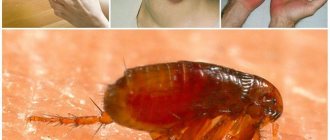Viruses in cats and people
It is worth understanding that a cold is a disease that is not characterized by contagiousness. That is, it is impossible to catch a cold, since the disease occurs when the body is overcooled or one infection is layered on top of another.
At the same time, viral diseases such as ARVI, influenza, and acute respiratory illnesses are contagious, but they are not transmitted from humans to animals. Therefore, the question of whether a cat can get the flu from a person has a negative answer.
Also, owners should not worry about being infected with viruses from animals. For example, panleukopenia is a deadly viral disease of cats, accompanied by fever, high temperature and dehydration, but is not dangerous for humans. The causative agents of most diseases in humans and felines are completely different. The only exceptions are strains of a number of diseases, such as lichen, rabies and toxoplasmosis and atypical mutated strains of viruses. Read about rhinotracheitis virus in cats here.
Can an owner get a runny nose from a pet?
Cats get colds too. People are able to organize more effective protection in the fight against colds than animals; they can consult a doctor on their own, go to the pharmacy for the necessary funds. Our smaller brothers do not have such opportunities. Let's take a closer look at how colds develop in our pets.
Cold symptoms
After a pathogenic cold virus enters the body, the pet experiences almost the same symptoms as a person. This is sneezing, coughing, watery eyes, runny nose.
A respiratory disease or herpes often occurs in the mucous membrane of an animal against the background of a cold. For example, cats often experience complications in the upper respiratory tract. As a rule, this is a reaction of their body to contact with parasites and bacteria, or the consequences of a progressive allergy.
As soon as you notice your pet is unwell and the above symptoms, if possible, consult a specialist.
This is very important, since a slight runny nose, if not properly treated, can develop into a serious pulmonary disease.
Unlike humans, the peak development of colds in animals is mainly observed in the summer, probably because at this time they have more contact with other representatives of their class.
The surest sign of a cold in small households is nasal congestion. When this organ of smell ceases to perform its natural functions, animals lose their appetite, and sometimes they even stop drinking, it is so important for them to smell food. If this happens to your pet friend, contact your veterinarian as soon as possible.
The duration of a cold in animals rarely goes beyond 8-10 days. The disease progresses in exactly the same way as in humans. The immune system devotes all its efforts to suppressing the virus.
If you discover that your pet is sick, be sure to ensure that he does not limit himself to the same amounts of food and water. The diet must be maintained in full. If your pet is no longer attracted to dry food, treat him to canned food, which has a strong and pungent smell. Do not allow the body to dehydrate; fluid is very important for the animal during a painful period.
A person cannot get a runny nose from a pet, you can be sure of that. The reason is the different nature of the viruses that cause colds.
It is the owner who is the main guarantor of a carefree and painless life for a pet.
Colds in cats
The owner cannot infect the animal with a cold, but this does not guarantee that the pet is protected from the disease. Colds are quite often diagnosed in representatives of the cat family. The risk of disease is high in weakened animals that have problems with the immune system caused by poor living conditions, improperly selected diet and other factors.
The course of a cold in cats, symptoms and treatment of which will be discussed further, depends on the age of the animal, its general condition and immunity.
Can a cat (cat, kittens) get a cold from a person?
Can a cat (cat, kittens) become infected with a disease from a person:
- A person, like a cat, cannot catch a cold. After all, a cold is not a viral disease. Humans have a completely different body, which differs from that of a cat; we have a better developed immune system and therefore we do not get infected from cats.
- As one veterinarian I know told us when we were treating our cat, that animals can suffer from the same diseases as people, because they are the same living organism as ours (our cat, for example, was allergic to poplar fluff), but an animal cannot become infected from a person.
- as the microbiology teacher told us: the pathogenicity of a microorganism is different. Both animals and humans are susceptible to strictly defined types of viruses, so the flu can be transmitted from a person to a cat, but the animal’s immunity will easily overcome it and will never get sick. the same thing, if a cat gets sick with the cat flu virus, it will not infect a person. so feel free to let your pet warm your bed during a flu attack: he is safe
- Let's start with the fact that neither a person nor a cat can catch a cold. This is a disease that occurs from hypothermia of the body. If you mean the following question: Can a cat become infected with ARVI from a person? The answer is negative. Cats have a strong immune system, and their body is completely different. If your cat has a cold, then you should contact your veterinarian so that he can prescribe medication.
- Of course not, animals will not get colds, ARVI, or flu from humans, human viral diseases do not spread to cats and kittens, the other day my whole family (husband, son and I) got sick with ARVI, and I have 2 cats and neither one of them is not infected, they run around the house and just want something to do, while the owners cough and sneeze.
- Cats, like people, can get colds, but the viruses that cause colds in humans and cats are different and human viruses do not affect cats, just like their cold viruses do not affect us. During the flu and cold epidemic, many entire families get sick and if cats could become infected from humans, and most people have pets, then the epidemic would spread to cats too.
- No matter how stupid it may sound, a cat (your pet) can actually become infected with a cold from its owner. I noticed this with my cat a couple of times. But this does not always mean that it was infected from the owner; it may simply have caught a cold.
- Most viruses are highly specialized and cannot be transmitted between species. More precisely, this happens, but very rarely with mutations of the virus. Hence all these bird and swine flus. Cats are very different from humans and human viruses do not infect them.
- It is generally impossible to catch a cold. It occurs from hypothermia during the accumulation of an infection, sometimes one that is constantly contained in the human body, and in unfavorable moments is activated. You can become infected with acute respiratory viral infections, acute respiratory infections, influenza, herpes, etc. Viral diseases in humans and for cats or dogs are not dangerous. Viral diseases in cats, although similar to human ones, are caused by other pathogens, those that are dangerous for the feline family. Likewise, a person cannot become infected from a cat with distemper (not to be confused with the plague), parvovirus, enterovirus (for cats, a different strain is active). There are, of course, infections common to humans and cats. These are toxoplasmosis, rabies, ringworm, and some others. By the way, a cat can become infected with ringworm from a person, although, of course, it usually happens the other way around.
We suggest you familiarize yourself with: Breeding pigs sale of live pigs || Breeding pigs sale of live pigs
Symptoms of the disease
Cats have a unique physiology, so when they have a cold, they may have a hot, dry nose, poor appetite, drowsiness, fearfulness and apathy. However, the symptoms listed are also typical for other cat ailments. Among them is infectious pneumonia in cats, the symptoms and treatment of which differ in some ways from the symptoms and treatment of the common cold. To accurately diagnose a cold, it is worth paying attention to other warning signs that are a signal for owners and indicate the need to visit a veterinary clinic.
Typical clinical symptoms of a cold in cats are presented as follows:
- greenish discharge from the sinuses;
- weakness, fatigue;
- difficulty breathing through the nose;
- irritation of mucous membranes;
- sneezing and coughing;
- tearfulness of the eyes.
If the owner suspects that the pet has a cold and has the symptoms listed above - lethargy, watery eyes, coughing in cats, the symptoms and treatment of the disease must be confirmed by a veterinarian.
Symptoms of a cat cold
A cat, like a person, can easily catch a cold, especially with reduced immunity.
Most often this happens due to violations of the feeding regime, previous infectious diseases, or long stay in cold, damp rooms. Cats that walk outside can catch colds from strong winds, snow or rain, low temperatures, or exposure to a draft.
In this case, the pet owner may notice the following symptoms in the cat:
- dry and hot nose;
- runny nose and sneezing;
- increased lacrimation;
- temperature increase;
- lethargy, lack of appetite;
- fast fatiguability
- in some cases - cough.
Important!
Under no circumstances should such signs be ignored - a complex of such symptoms should be the reason for a visit to the veterinarian.
If your cat also has a cough, check to see if she is wheezing. Pneumonia or bronchitis are diseases that require urgent treatment and cannot be delayed.
Cold treatment
If a veterinarian has confirmed a cold in cats, treatment at home can be combined with the use of drug therapy to relieve symptoms, then the selection of complex therapy is carried out individually. The pet is prescribed medication and a number of medications are prescribed. For example, Loxicom for cats, the price of which is about 850 rubles, or another veterinary drug with anti-inflammatory, antipyretic and analgesic effects may be prescribed.
The specialist can also prescribe the following medications for your pet: nasal drops for cats, antibiotics, immunomodulators. Some procedures will also be required. This is rinsing the sinuses and clearing the eyes of secretions.
Caring for cats with colds
If the owner notices sneezing, difficulty breathing and coughing in a cat, he discusses the reasons for treating these symptoms with a veterinarian. In this case, the sick animal must be provided with special conditions for a speedy recovery.
The owner must provide a balanced, complete diet and protect the animal from cold and drafts.
It is also not recommended to keep a cat in conditions of high humidity and uncomfortable temperature limits beyond 20-24 degrees Celsius.
With a mild cold, your pet can quickly recover and return to a normal rhythm of life. If your cat has a weak immune system and has a hard time suffering from a cold, you should not delay a visit to the veterinary clinic. In advanced cases, a common cold can cause serious complications and loss of immunity. You can read the article that talks about pyometra disease in cats.
Colds in cats: causes, symptoms and treatment
People take colds so lightly that when they get sick, they don’t even stop working, infecting healthy people in transport and colleagues at work. In the modern pace of life, it is not customary to take sick leave or reschedule plans. Our pets live differently, but they get sick like us. A cold in cats is not a fatal disease, but it poses a greater danger than the familiar human acute respiratory infection.
Causes of colds in domestic cats
Normally, cats do not get colds; their immune system successfully fights viruses even in old age. However, there are a number of circumstances that can significantly weaken the immunity of a purring friend:
- Violation of maintenance standards - dampness and drafts are the most common causes of colds in pets. High humidity in the room can lead a pet to pneumonia, and the disease process is so gradual that the owners are late in realizing the seriousness of the problem.
- Poor nutrition - a constant deficiency of vitamins that occurs with a monotonous or poor-quality diet leads to a decline in immunity.
- Violation of the temperature regime - cats react sharply to “jumps” in the temperature in the home; the optimal range is considered to be 18–20 °C in the warm season, 22–24 °C in the cold season.
- Hypothermia – freedom-loving cats walking outside can get caught in the rain. When the animal gets very wet, its thermoregulation is disrupted and the pet freezes in a matter of seconds, especially if it is in a draft. The same goes for bathing - poorly dried wool can cause illness.
- A hidden disease - an asymptomatic pathology can “draw” the strength of the immune system onto itself, depriving the pet of protection from an elementary cold.
Particular care must be taken during the winter months. If your pet is actively “occupying” radiators and heating devices, take action. Arrange a bed for the animal that is located far from the floor, if the dimensions of the home allow - in the kitchen. For bedding, use an old terry towel, blanket or any fabric that retains heat.
Veterinarian's opinion! Whether a cat can catch a cold from a person is a controversial issue. A cold is most often a viral disease - ARVI. Viruses themselves can infect organisms selectively. That is, if we don’t talk about the epidemic of a new strain, then human ARVI is not dangerous for a cat. At the same time, colds caused by bacteria - dampness, fungi, etc. - can affect pets. That is, hypothetically, an owner could give a cat a cold if it is caused by a bacterial outbreak.
If infection occurs
What to do if your cat gets the flu? The first thing you need to do is urgently contact a veterinarian to rule out more serious diseases. If a common cold is confirmed, simply follow your doctor's instructions and your pet will recover within a week. To prevent the disease, or rather to minimize the theoretical possibility of its occurrence, it is enough to follow a small list of mandatory tips:
- Provide your cat with a balanced and nutritious diet. A lack of vitamins and minerals can weaken the immune system and lead to illness.
- Protect your cat from drafts. Such a seemingly harmless phenomenon as a draft can cause enormous harm - with unnoticed hypothermia, your cat is very likely to catch some kind of cold infection.
- Protect your pet from fungi and dampness. These factors can seriously harm a person, let alone the small body of a domestic cat.
- Observe temperature conditions. In the summer months, the room where the cat lives should be 18-20 degrees, and in winter - 22-24 degrees Celsius. At these temperatures, your pet will feel as comfortable as possible.
- Take your pet to the veterinarian periodically. A preventive examination will help to avoid sluggish chronic diseases that can significantly weaken the immune system and provoke a cold.
That's all that can be said about the cold of our tailed purrs. If you are worried about whether a cat can become infected from a person, then follow all the requirements for keeping your pets, and the disease is guaranteed to bypass your home.
Main signs of a cold
Now about the main thing, how to distinguish a cold from other diseases. From the side of cat physiology - a hot and/or dry nose, deterioration of the coat, ignoring toys and rewards from the owner, prolonged sleep, aggression or fearfulness towards other animals. Signs of a cold in cats are often confused with symptoms of more serious diseases, so let’s look at the issue in more detail. The symptoms of the disease are very similar to those in humans:
- Weakness - within reason, the cat should leave its sleeping place and stand firmly on its feet. Fatigue is normal, complete apathy most likely indicates more serious reasons.
- Snot is a discharge from the nose, this is a normal and healing process during a cold; dead leukocytes and microorganisms are removed from the body with mucus. During a runny nose, a cat may have difficulty breathing through its nose, so it opens its mouth slightly; breathing exclusively through the mouth is a dangerous symptom. The discharge should be transparent with little viscosity. If the discharge changes color, completely blocks the airways of the nose, or becomes purulent, it’s not a cold! To the vet!
- Sneezing and coughing are natural processes to clear the airways. The cat sneezes and washes itself - everything is within normal limits; if its face is dirty with matted hair, the disease is progressing or has a pathological cause.
- Watery eyes may be observed as a consequence of increased irritation of the nasal mucosa.
- Lack of or decreased appetite - a cold can suppress a cat’s appetite for several days, while the animal sometimes drinks more than normal. There is no point in “persuading”, much less forcing, to eat; the animal knows its body better than any doctor. Maximum - offer the cat low-fat broth. If the animal refuses to eat for more than 32 hours, call your veterinarian, describe the symptoms and together decide how to proceed.
- Redness of the mucous membranes is an optional symptom and is extremely rare in cats of “noble” breeds. However, reddened eyelids may indicate increased blood pressure, which is a separate symptom.
- Increased base body temperature – cats do not have a stable body temperature. Even a healthy pet can change its temperature during the day by 0.5–1 °C; depending on the size and breed, the base value can range from 37.5 to 39 °C. The temperature of hairless cats is no different from wool cats, although they may seem hotter to the touch.
Upper respiratory tract infections
A cat's upper respiratory tract - the throat, nasal passages and paranasal sinuses - periodically suffers from infections caused by various viruses and bacteria.
Upper respiratory tract infections are quite common in cats during the spring and summer months.
Your pet can become infected with this disease through direct contact with a sick cat or through indirect contact - with things contaminated by an infected animal, for example, bedding, dishes, clothing, and so on.
Cat owners often ask whether their pet can catch a cold or flu from a human. The answer to this question is no, at least when it comes to a viral infection. Colds are caused by a virus, but most viruses only affect specific types of living beings, which means that people suffer from human viruses, and cats become infected with feline viruses.
Unfortunately, just as there are no specific medications to treat respiratory viruses in humans, there are none for cats, so treatment involves relieving symptoms and trying to prevent secondary bacterial infections.
Just like our human colds, cat colds are contagious and if one cat gets sick, it can infect all the other cats in the house.
Cat colds caused by viruses are usually accompanied by sneezing and clear discharge from the eyes and nose.
More serious upper respiratory tract infections (often a combination of viruses and bacterial infections) cause fever, swollen lymph nodes, yellow-green discharge from the eyes and nose, and loss of appetite.
If these symptoms are present, antibiotics will be needed to fight the bacterial component of the infection.
Owners of cats who are never outdoors are very surprised that their cats are capable of contracting an upper respiratory tract infection without contact with other animals.
However, most of the viruses that cause these infections are airborne, and some are also waterborne.
Since it is impossible to filter all outside air and water as it enters the home, cats that live indoors full-time are also at risk.
Viruses are the most common cause of upper respiratory tract infection in cats. Calicivirus and herpes virus cause 80-90% of all infections and are highly prevalent in shelters, catteries and homes with large numbers of cats.
These viruses can be transmitted from cat to cat through sneezing, coughing, licking, eating and drinking from shared utensils. Once infected, cats can become carriers of the virus, and although they may not show clinical signs, they will transmit the virus to other animals.
Cats often develop secondary bacterial infections secondary to viral infections.
There are also upper respiratory infections in cats, which are mainly caused by bacteria. Chlamydia and Bordetella are also common in shelters and places with large numbers of cats living together. Bordetella is less common in cats than in dogs and is usually associated with stress and overcrowding.
There are vaccines that protect cats from some common infections. Vaccines provide immediate protection against three or four infections, as they contain antigens to feline rhinotracheitis, calicivirus and panleukopenia, some also include antigens to chlamydia.
- Rhinotracheitis is a feline herpes virus that can cause sneezing, conjunctivitis, and sinus congestion.
- Calicivirus can cause sneezing, mouth sores, fever, and nasal congestion.
- Chlamydia is a type of bacteria that can cause conjunctivitis and other respiratory inflammations.
Even cats that are regularly vaccinated are susceptible to these infections, as vaccines do not prevent infection but only reduce the severity of clinical signs.
The fact that one of the most common feline viruses that causes upper respiratory tract infections in cats is the herpes virus makes controlling feline colds very difficult.
The herpes virus, as a rule, is periodically activated, and this means that there will be repeated relapses of the cold. This is similar to people who have the herpes virus, which periodically causes blisters on the lips.
Such exacerbations of the virus can occur many times.
Symptoms of upper respiratory tract infections vary depending on the cause and location of the infection, but some of the most common clinical signs of the disease include:
- Sneezing, coughing;
- Nasal congestion;
- Clear or yellow-green nasal discharge;
- Vomit;
- Salivation;
- Fever (high temperature);
- Loss or decreased appetite;
- Rapid breathing;
- Ulcers in the mouth and oral cavity;
- Narrowed eyes;
- The cat constantly rubs its eyes with its paws;
- Mouth breathing;
- Depression and lethargy.
An animal's age, vaccination status, and physical condition greatly influence its susceptibility to upper respiratory tract infections. Unvaccinated cats living in homes with large numbers of pets or in shelters are most susceptible to disease.
Stress also plays a significant role in outbreaks, and cats in shelters, kennels or boarding facilities are often highly stressed.
Cats that recover from an upper respiratory infection become carriers and may relapse during times of stress.
Certain breeds of cats, such as Persians and other brachycephalic (flat-faced) cats, are more predisposed to developing upper respiratory tract infections due to the structure of the skull.
What should you do if you suspect your cat is suffering from an upper respiratory infection? First, assess your kitten's ability to eat, drink, and breathe normally.
If you see that your cat is eating and drinking relatively normally, then regular eye and nose treatment may be sufficient. However, if your cat appears depressed, lethargic, is not eating, or is having difficulty breathing, contact your veterinarian.
Cats that cannot breathe well cannot eat well. You can try to relieve your kitten's nasal congestion by placing him in a steamy bath or using an inhaler.
Do not give your cat any human cold medicine unless recommended by a veterinarian. Most of these products contain aspirin or paracetamol, which can be fatal to your cat.
If you think your cat is suffering from an upper respiratory infection, take her to the vet. An examination by a veterinarian will help determine if your cat requires medication, has a fever, or is dehydrated. Do not self-medicate, as the cat may be contagious and require isolation, antibiotics and additional veterinary care.
How to treat a cat yourself
If the disease progresses calmly, the pet can be treated at home. Therapy involves comprehensive relief of symptoms, alleviation of the general condition and stopping the progression of the infection. Before treating a cold with medication, follow these steps and monitor your pet for 12 to 24 hours. If the condition improves, the animal may be able to cope on its own. If the condition worsens or new symptoms appear, it is necessary to add medications.
- Place the animal in a dry, ventilated area.
- Provide peace.
- Provide your cat with a warm drink, preferably milk.
- If the animal is cold, cover it and make a heating pad.
- Give the animal a massage from the limbs to the body; if the cat does not like such procedures, just pet it - this will increase blood flow and help the body fight.
“Home” symptomatic treatment is allowed at the stage of a runny nose and increased lacrimation; the cat must be helped to clear the airways, for this:
- We clean the nose and eyes of secretions with a moistened cotton sponge. Wet the sponge in clean water; do not use herbal infusions unless you are sure that your pet is not allergic.
- We rinse the nose with the solution, choose one of the options: Adrenaline + novocaine 1%;
- Tannin 0.5%;
- Ethacridine 0.2%;
- Zinc sulfate 2%.
- We instill the nose with a special veterinary medicine or a mixture of fish oil and methanol 1%.
- We try to place streptocide powder in the nostrils, but the cat really doesn’t like it.
Important! If discharge from the eyes and ears becomes purulent, contact the clinic immediately. This is one of the signs of acute pneumonic distemper in cats; the disease is transient and deadly.
If the condition worsens and a cough appears, antibiotics for cats for colds are relevant. If you are not a doctor, it is better to decide what to treat after consulting a doctor. There is no opportunity to go to the clinic - call, but do not make a choice at random, especially do not treat the animal with your own medications.
Important! Do not self-medicate if you are not sure of the diagnosis and do not have experience in keeping and basic treatment of pets.
Treatment at home
First of all, a person should relieve the symptoms and try to alleviate the course of the disease in the cat. To do this, she needs to be provided with a warm place and peace.
For additional heating, the animal can be covered with a small blanket or rug. Human massage of the limbs has a good effect on cats. But not every animal tolerates it calmly, and it can be replaced with regular stroking. When a person pets a cat, the cat's blood flow increases and the condition improves.
© shutterstock
To alleviate the cat's condition, you also need to help him get rid of the discharge. The eyes and nose are wiped with a cotton swab soaked in a solution of herbs. If you are afraid of allergic reactions, then the herbal mixture can be safely replaced with clean boiled water. In some cases, after this procedure, streptocide powder is placed in the cats' nostrils. But not every person, much less a cat, can bear this.
If you have carried out these procedures and after 12-14 hours the animal feels better, then the trip to the veterinarian can be postponed. But if no changes in your condition are observed, then immediately go to the hospital.
To summarize, we can say that a person infected with the flu has nothing to fear. Even if the whole family has a cold, your pet is not in danger. A person cannot cause a cat to get a cold.
Possible consequences of a cold in a cat
Accustomed to enduring acute respiratory infections and respiratory infections on their feet, owners of furry friends sometimes don’t even think about how atypical a cold is for a cat and what consequences it can bring. For the owner, most often, the pet’s illness is not dangerous - a cat cannot infect a person with a cold, but it is easy to give the infection to all four-legged and feathered animals living in the house.
Ignoring the primary symptoms, with a 90% guarantee, will lead to complications: bronchitis, inflammation of the lungs, joints, and genitourinary system. In addition, a weakened immune system is bad “armor” for an animal; even dust brought on shoes can become a source of serious illness for a cat with a cold.
What dangerous diseases are “masked” as signs of a cold?
Chronic and extremely dangerous diseases can be hidden behind a “harmless” runny nose, and incorrect diagnosis and “persistent” treatment for a cold will only worsen the condition. A short list of “tricky” diseases:
Rhinotracheitis is an acute disease of the eyes and nose, accompanied by copious adhesive discharge. Only cats that have recovered from the disease have immunity.
Pneumonia is diagnosed by a regent and by listening to the chest.
Mycoplasmosis and other infections affecting the genitourinary system and mucous membranes.
Calcivirosis is an acute infectious disease. Accompanied by conjunctivitis and the appearance of ulcers in the mouth.
FIP - infectious peritonitis is a very serious disease with many strains that affects almost all vital systems of the animal. At first, severe weight loss, irritation of the mucous membranes, lacrimation, jaundice, kidney failure, and clouding of the cornea are observed.
Panleukopenia (distemper) is a deadly disease that causes purulent discharge from the nose and eyes.
Can a person infect a cat?
The weather outside is quite changeable now, and therefore the topic of colds is more relevant than ever. All caring cat owners have a very reasonable question: can a cat catch a cold from a person? It is clear that a person can catch some diseases from his pet, but is it possible, on the contrary, to reward his purr with an unpleasant disease? That is, is it possible to transmit the disease from the owner to his pet, and if so, how can you protect your pet from the disease? We will try to answer all questions regarding this important and relevant topic.
Prevention
A cat, like a child, needs supervision. Don't let him go outside in bad weather and don't let him freeze. Even the fact that cats have warm fur does not eliminate the likelihood of catching a cold. You also need:
- ensure that the animal does not sleep in a draft;
- respond to the first signs of illness in a timely manner;
- when treating infections, make sure that the cat has fully recovered;
- provide your pet with good nutrition that contains a complex of vitamins;
- try not to bathe your cat too much, especially in the cold season: at this time they experience severe stress and often freeze, which can not but affect their health.
Do cats get colds?
Cats, like all animals, are susceptible to colds, but they manifest themselves completely differently than in humans. The most well-known disease, with symptoms similar to a cold, is rhinotracheitis in cats. In addition, if the cat is sick, the owner needs to pay attention to a number of factors that could lead to this, because cats normally have a fairly strong immune system, and they successfully resist colds.
Some of the most noticeable symptoms of a cold include:
- weakness: the cat gets tired quickly, avoids games and tries to sleep as much as possible;
- dry nose: this symptom signals an increase in the pet’s body temperature, which often accompanies a cold;
- Watery eyes: A common symptom of a cold in cats is watery eyes;
- runny nose: discharge from the nose of clear or greenish secretions, with which the body removes pathogens;
- Sneezing and Coughing: Just like humans, cats sneeze and cough to clear accumulated mucus from their lungs.
If you notice similar symptoms in your pet, urgently take him to the veterinarian, because a similar picture is observed not only with a cold, but also with more serious respiratory tract diseases. If the cat does not receive qualified medical care, the disease can be very serious, and no one will tell you what the final consequences will be.
Other types of infections
There is no cat flu in nature, but there are other standard feline diseases, such as calcivirosis and rhinotrachiitis, which are similar to the flu, but are not it.
A cat, like a person, is primarily a living organism with its own characteristics of the immune system and is also susceptible to a variety of colds.
As a rule, the immunity of cats is much stronger than that of humans; therefore, the chance of a feline to become infected is much less.
Attention!
The presence of unusual symptoms, for example, purulent discharge from the eyes, should be a reason for concern and an urgent visit to the doctor.
However, cats can get colds and, like humans, become infected from communicating with a friend who has a cold or from contact with contaminated objects. Most often, older cats and those cats with weakened immune systems get sick. The main factors that have a negative impact on the immune system in cats are:
- poor nutrition;
- hidden diseases of the pet;
- period of change of baby teeth;
- unfavorable living conditions;
- hypothermia.
In the vast majority of cases, people confuse the flu with a common cat cold.
Upper respiratory tract infections are also a common viral disease. These infections can be transmitted to a cat from a relative through direct or indirect contact (shared household items).
Is infection possible?
Can a person infect a cat? Since the symptoms are so similar, many people think that a cat cold is a consequence of infection with a virus from a person. But can a cat get infected from a person? The answer is simple: in most cases, this possibility is excluded, since humans and cats have completely different causative agents of colds, and even if your whole family is sick, your pet is most likely safe.
It’s a different matter when we are talking not about a viral disease, but about a bacterial cause of the disease. In this case, your cat could theoretically become infected with pathogenic bacteria that could give her a cold. However, the chance of this is not great.
Recently, the appearance of various, atypical strains of the influenza virus has become more frequent, affecting both humans and animals. These diseases are not something to joke about: there is a possibility of transmission of the disease both from a cat to a person and from a person to a cat. Moreover, there is still no treatment for many forms of influenza, since scientists simply cannot keep up with the mutating pathogens and are late in creating an effective medicine.
In such a situation, the answer to the question of whether a cat can get the flu from a person is not so obvious. Most likely, maybe, because not all the properties of the new pathogen have been studied. However, this is only possible if there are new strains that have not been sufficiently studied, and is completely impossible with ordinary flu, which affects the vast majority of people.
Can a person get the flu from a cat?
Typically, a person can become infected with the influenza virus when enough of the virus comes into contact with the eyes, nose, mouth, or is inhaled. People can catch the flu from a sick cat by touching the cat's virus-containing secretions and then touching their eyes, nose, or mouth. In addition, sick cats may cough or sneeze, which can release droplets into the air that contain the virus, which a person can breathe in or get into their eyes, nose, or mouth.
Since the disease is serious, let’s try to figure out what to do if a cat contracts the flu or catches a cold.
© shutterstock











